Comet 2014 Q2 Lovejoy
Discovered on August 17, 2014 as a 15th magnitude object deep in the southern skies, comet 2014 Q2 Lovejoy became a nice bright naked-eye comet during early 2015. It displayed a large, greenish coma and an intricately detailed, narrow ion tail.
My first view of the comet was on December 25, 2015, when it was low on the horizon in the constellation of Columba. At this time, it was easily visible to the naked eye despite the presence of a bright Moon. In 20x80 binoculars only a trace of tail was visible, but the coma was quite large.
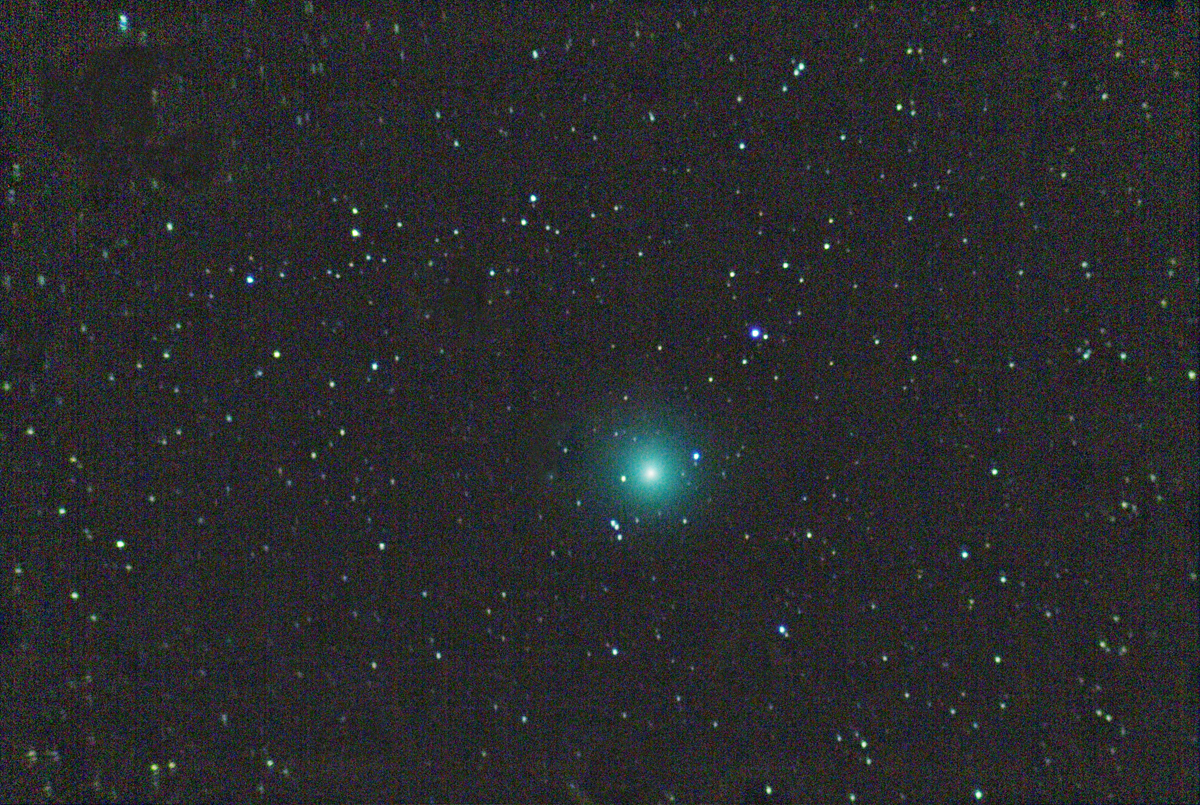
Comet 2014 Q2 Lovejoy. 25 December, 2014.
Combination of 10, 30 second images.
Canon 350D DSLR camera and an 85mm f/3.5 lens.
During January 2015, the comet rapidly headed northwards, becoming higher in the sky and more easily visible. As it became higher, it was also brightening and the tail became more easily visible.
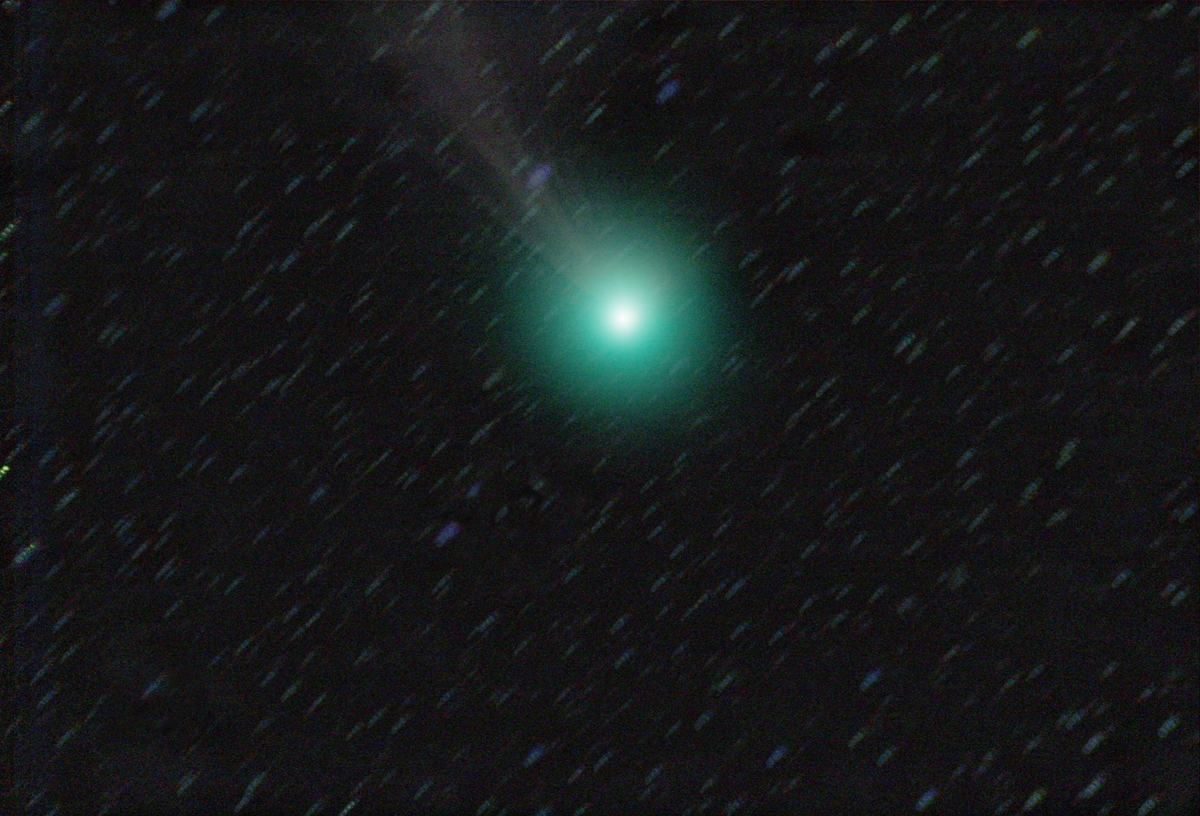
Comet 2014 Q2 Lovejoy. 6 January, 2015.
Combination of 48, 30 second images.
Canon 350D DSLR camera.
5" f/5 refractor at prime focus.
On this night I decided to try some spectroscopy of the comet. I was still trying to work out the use of the spectroscope, but was quite happy with the results. The Swan bands from carbon emission in the coma were very prominent.
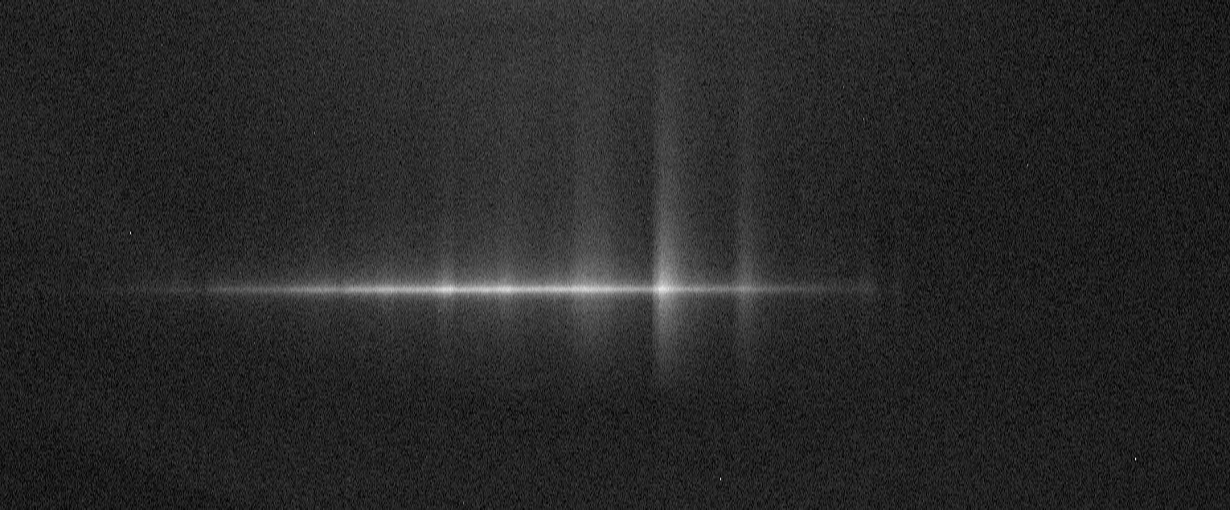
Comet 2014 Q2 Lovejoy spectrum. 6 January, 2015.
Combination of 12, 3 minute images.
SBIG ST-8XE CCD and SBIG SGS spectroscope.
20" f/6.8 Dall-kirkham cassegran at prime focus.
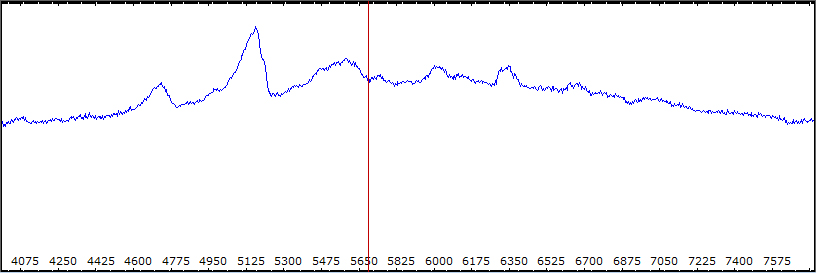
Graphical trace of the above spectrum. Most of the emission lines are caused by carbon on the comet's coma.
During the interval over which these images were taken the comet moved noticably, so I put them together in an animation.
January 11, 2015 provided one of the best views of the comet. On this night I joined several members of the South Plains Astronomy Club at one of their more remote observing sites where the southern skies were much darker than at the Skyview Observatory. The comet by now was located not far from the Pleiades and was very obvious to the naked eye. A faint tail was visible on 20x80 binoculars, and this tail could be followed for more than 3 degrees in my 5" telescope.
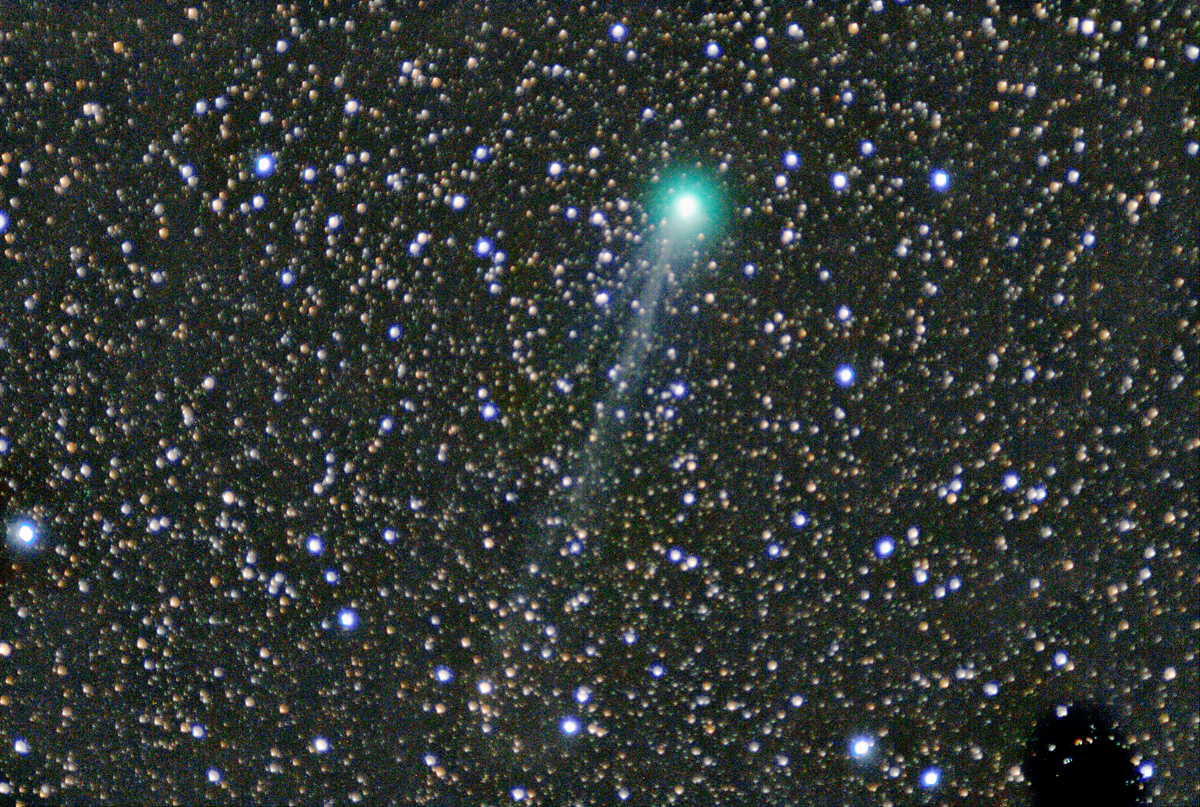
Comet 2014 Q2 Lovejoy. 11 January, 2015.
Combination of 4, 2 minute images
Canon 350D DSLR camera.
135mm f/2.8 Olympus lens.
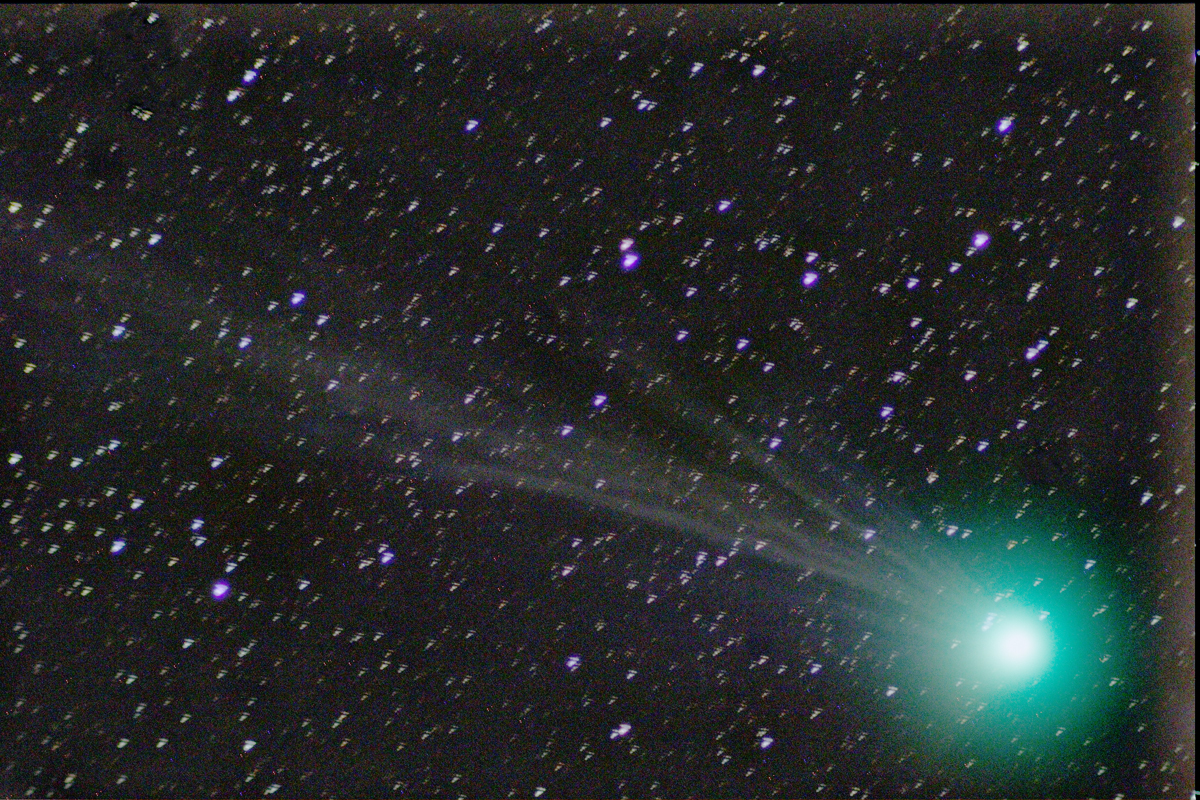
Comet 2014 Q2 Lovejoy. 11 January, 2015.
Combination of 6, 2 minute images
Canon 350D DSLR camera.
5" f/5 refractor at prime focus.
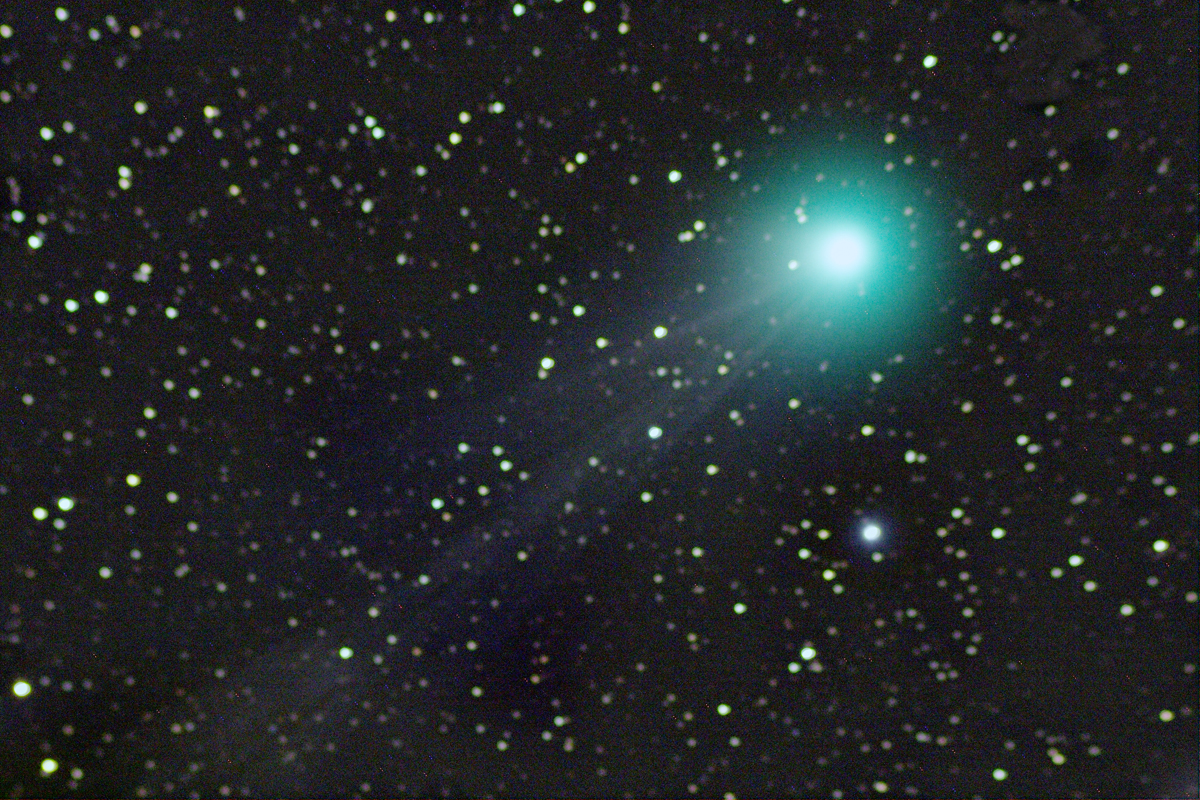
Comet 2014 Q2 Lovejoy. 17 January, 2015.
Combination of 3, 2 minute images
Canon 350D DSLR camera.
12" f/10 schmidt-cassegrain telescope with an f/6.3 focal reducer.
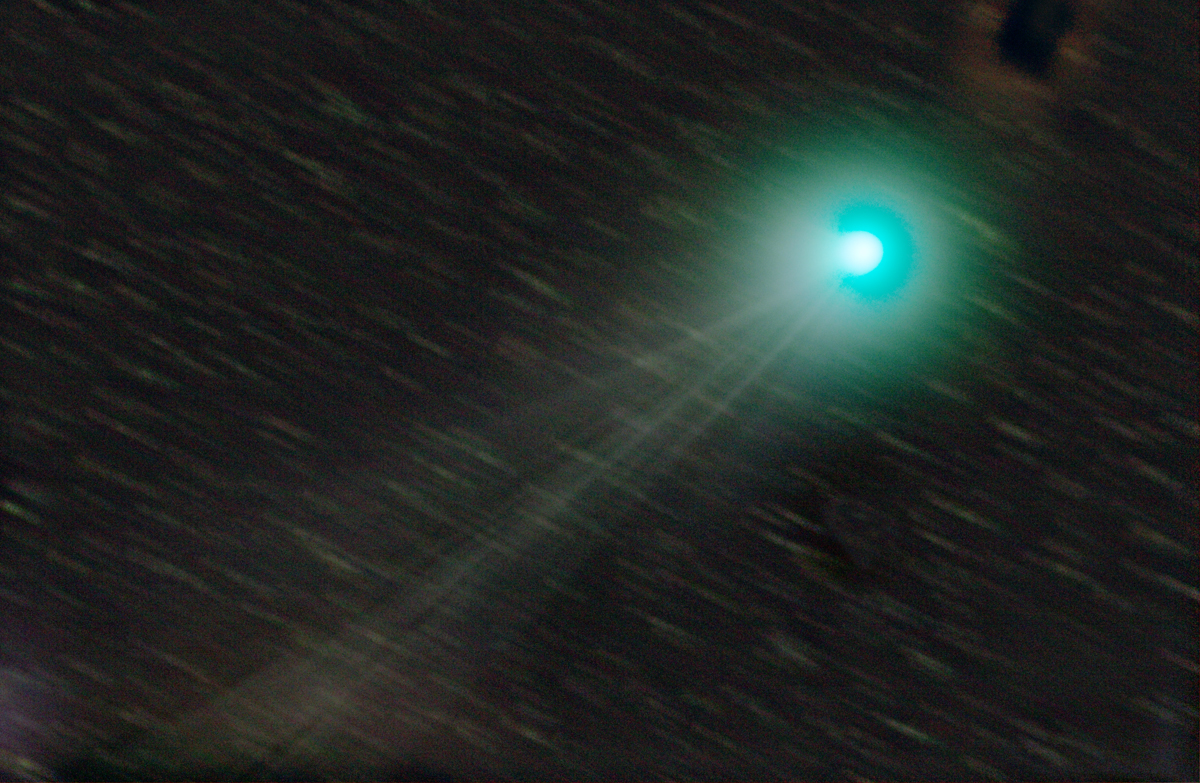
Comet 2014 Q2 Lovejoy. 17 January, 2015.
Combination of 48, 30 second images
Canon 350D DSLR camera.
12" f/10 schmidt-cassegrain telescope with an f/6.3 focal reducer.
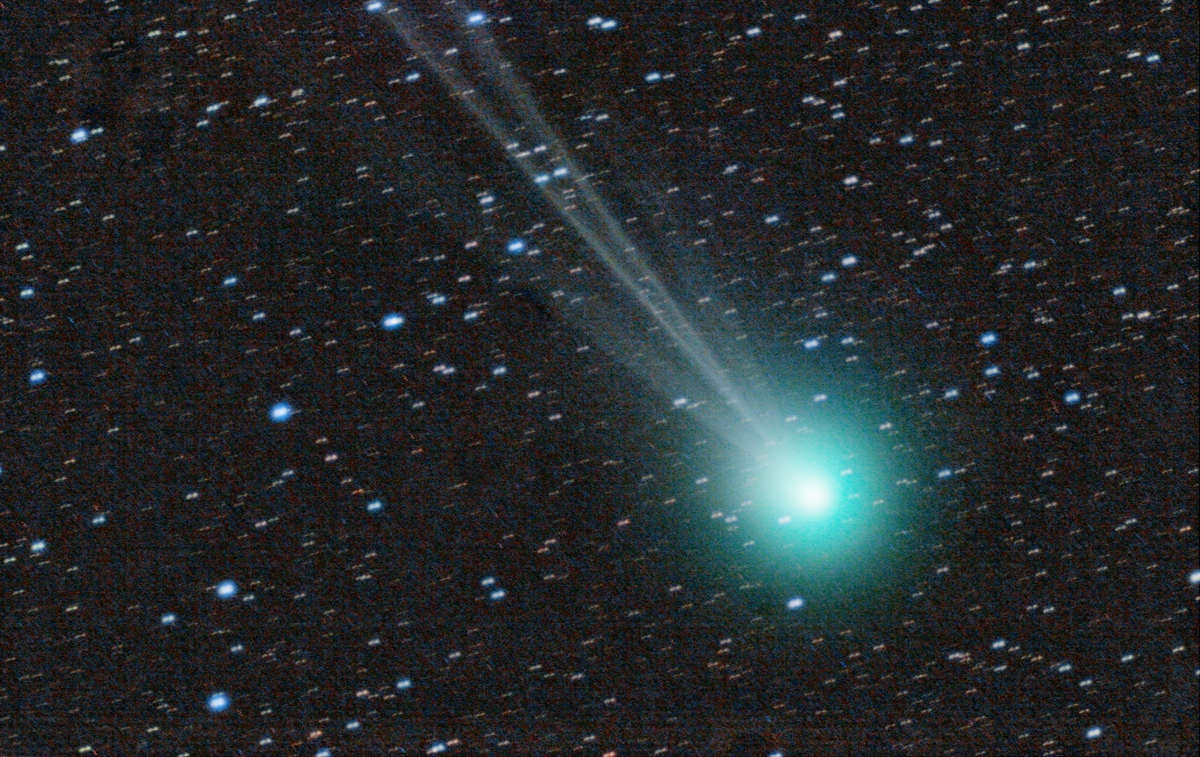
Comet 2014 Q2 Lovejoy. 19 January, 2015.
Combination of 20, 2 minute images
Canon 350D DSLR camera.
5" f/5 refractor at prime focus.
Once again, during the interval over which these images were taken the comet moved noticably, so I put them together in an animation.
Since I had the time, I decided again to try some spectroscopy of the comet. The results seemed to be better this time. Again the Swan bands from carbon emission in the coma were very prominent.

Comet 2014 Q2 Lovejoy spectrum. 6 January, 2015.
Combination of 10, 5 minute images.
SBIG ST-8XE CCD and SBIG SGS spectroscope.
20" f/6.8 Dall-kirkham cassegran at prime focus.
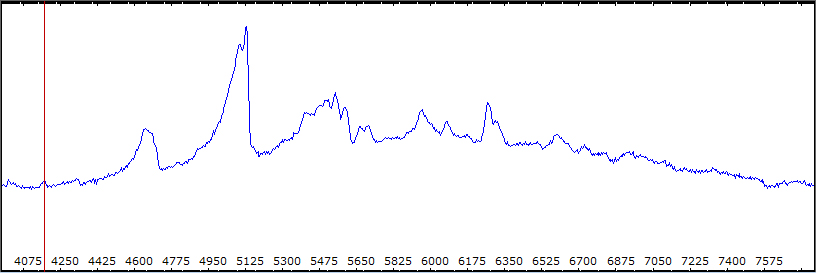
Graphical trace of the above spectrum. Most of the emission lines are caused by carbon on the comet's coma.
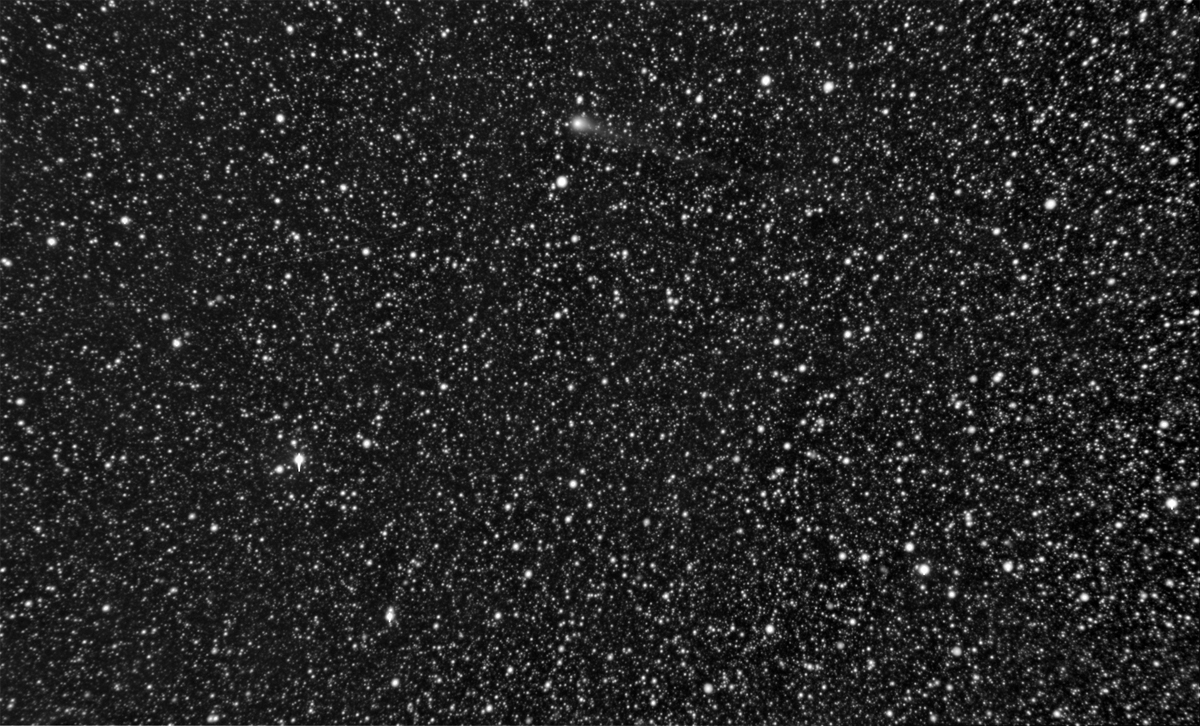
Comet 2014 Q2 Lovejoy. 8 February, 2015.
Combination of 60, 1 minute images using a clear filter.
SBIG ST-8XE CCD. 50mm f/4 Nikormat lens.
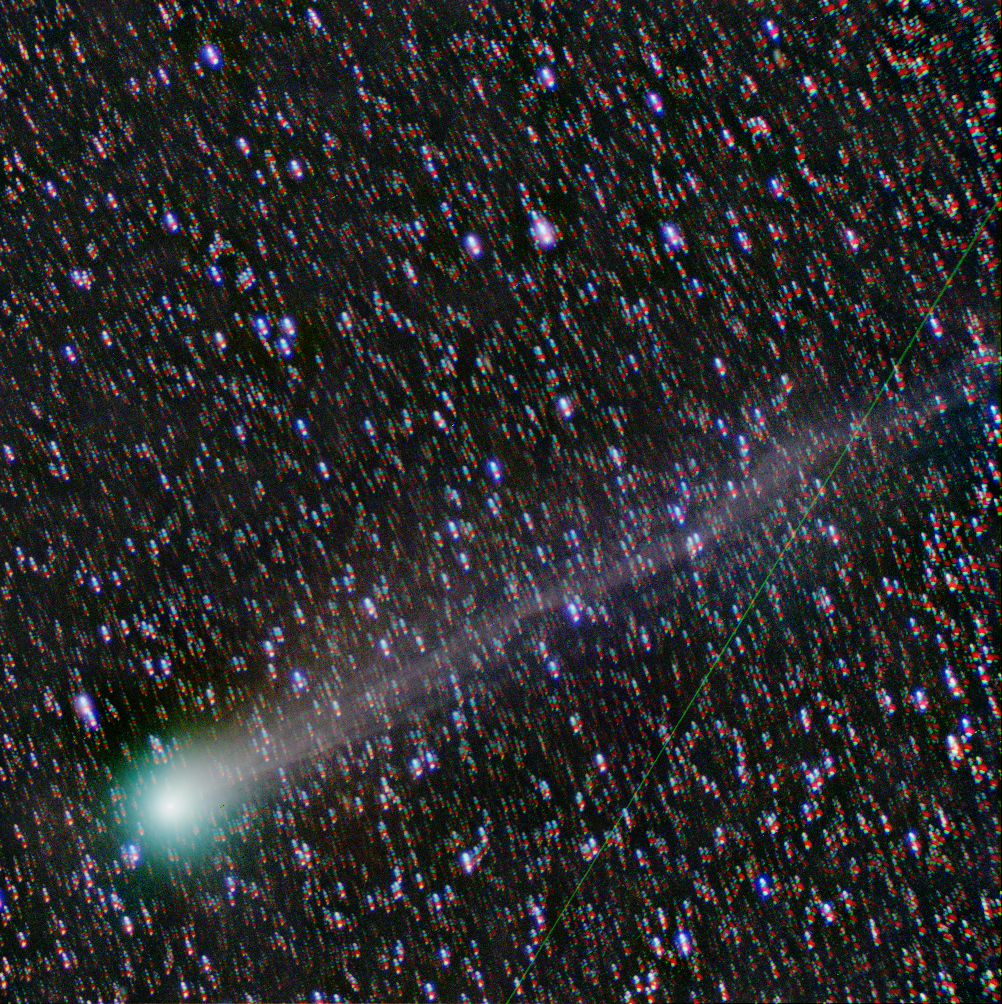
Comet 2014 Q2 Lovejoy. 8 February, 2015.
Combination of 15, 1 minute images using red, green and blue filters.
SBIG STL-1001E CCD. 5" f/5 refractor at prime focus.
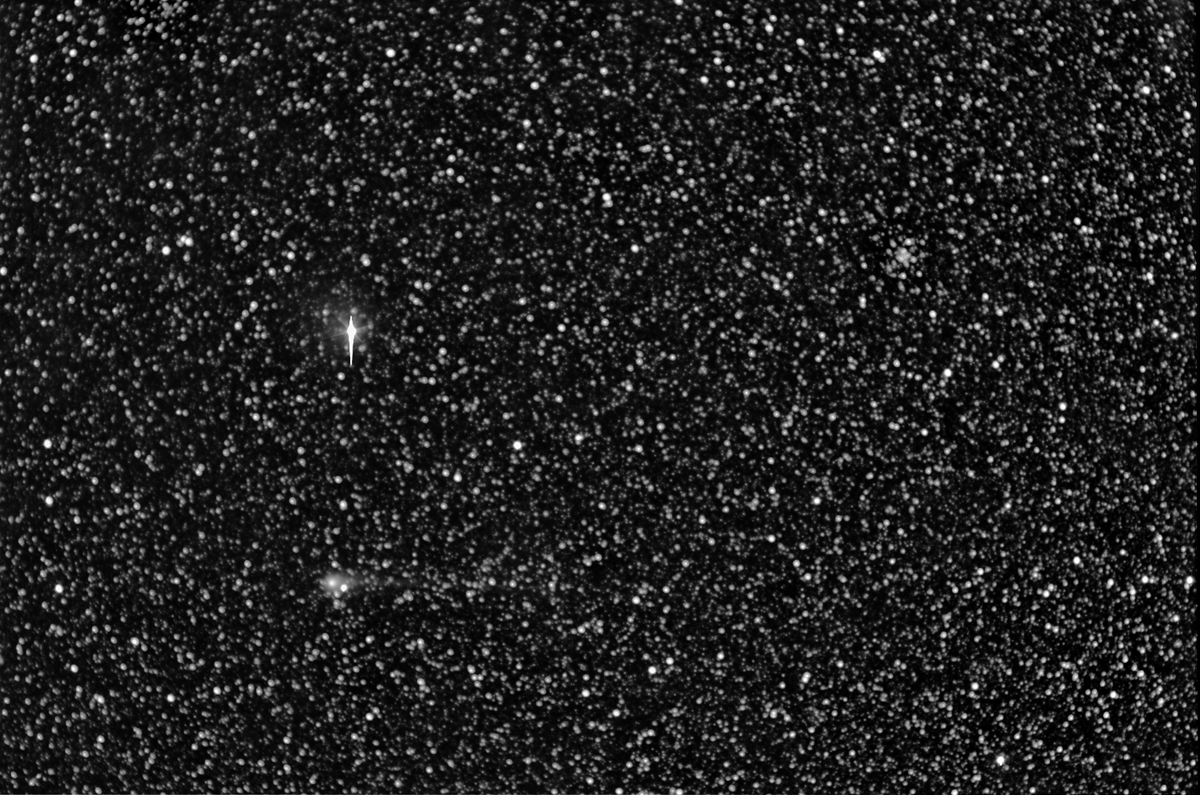
Comet 2014 Q2 Lovejoy. 9 February, 2015.
Combination of 60, 1 minute images using a clear filter.
SBIG ST-8XE CCD. 50mm f/4 Nikormat lens.
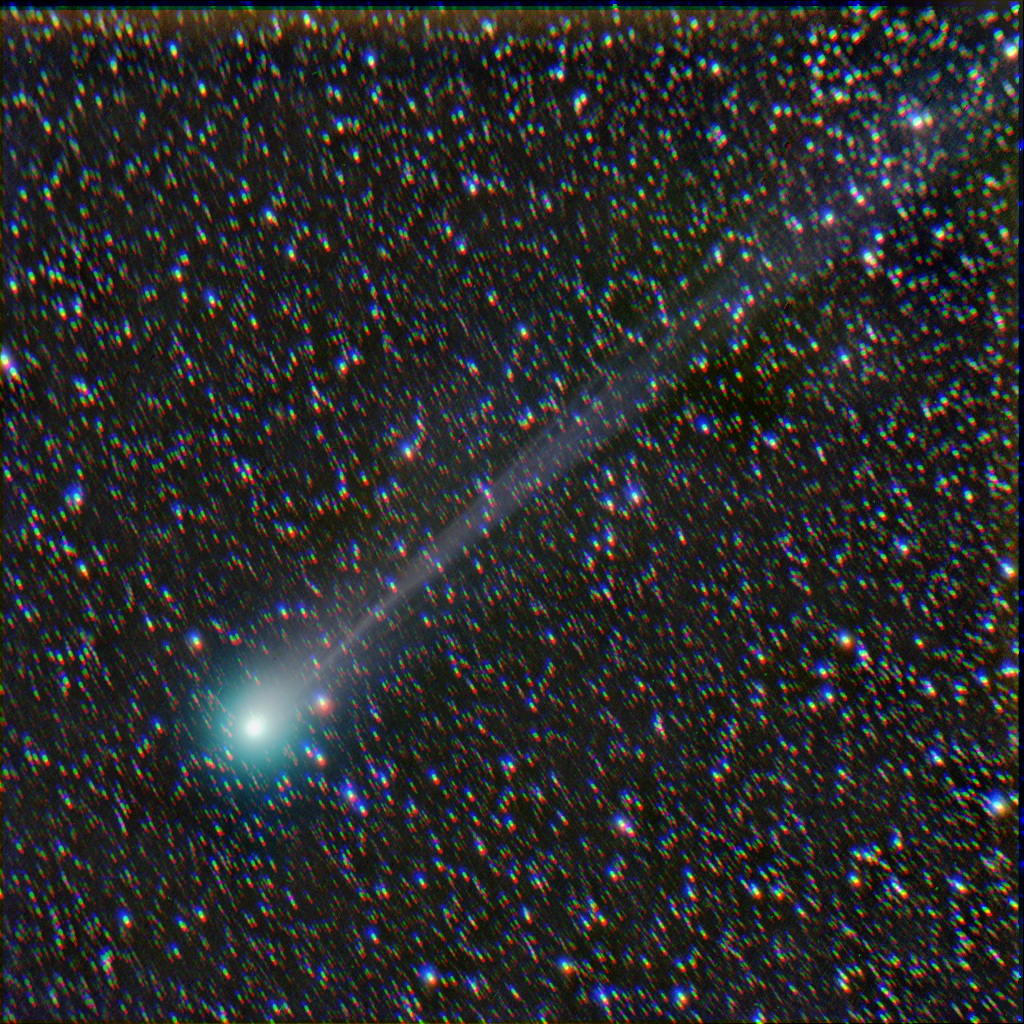
Comet 2014 Q2 Lovejoy. 9 February, 2015.
Combination of 15, 1 minute images using red, green and blue filters.
SBIG STL-1001E CCD. 5" f/5 refractor at prime focus.
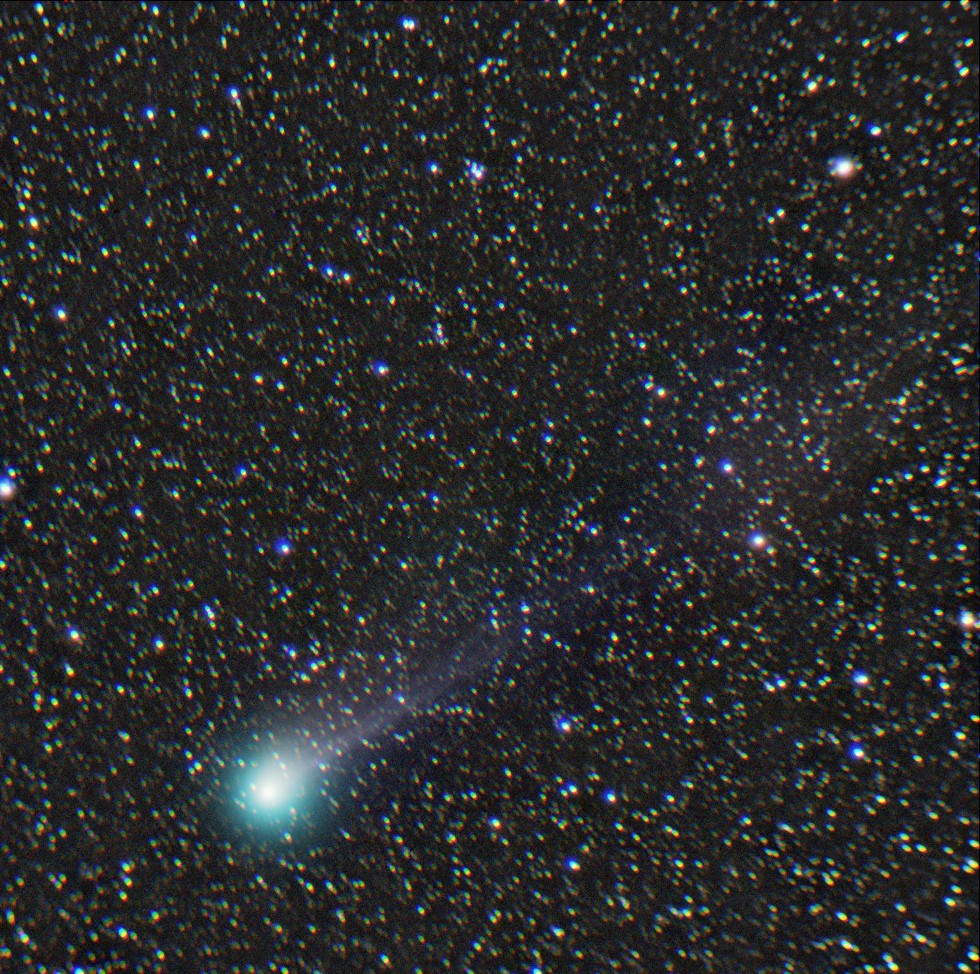
Comet 2014 Q2 Lovejoy. 15 February, 2015.
Combination of 10, 2 minute images
Canon 350D DSLR camera.
5" f/5 refractor at prime focus.
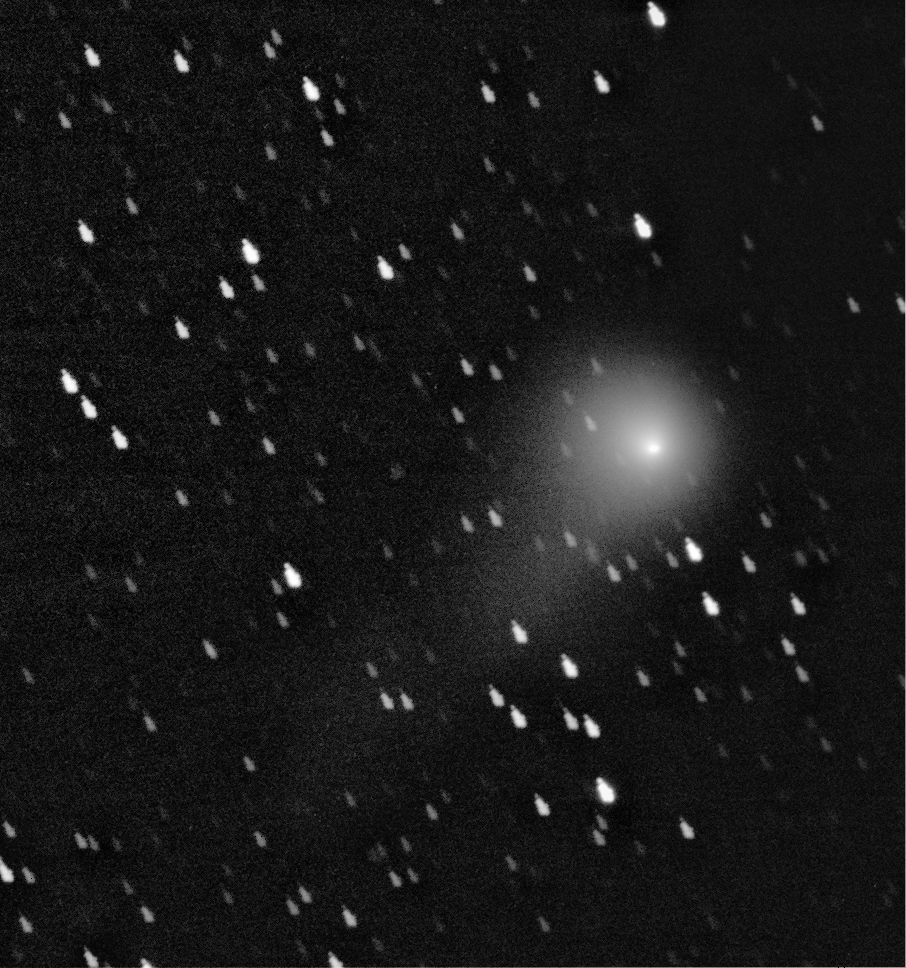
Comet 2014 Q2 Lovejoy. 3 June, 2015.
Combination of 15, 1 minute images.
SBIG STL-1001E CCD.
20" f/6.8 Dall-kirkham cassegran at prime focus.
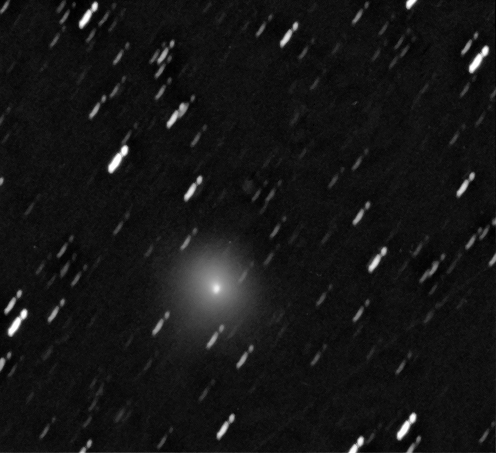
Comet 2014 Q2 Lovejoy. 7 September, 2015.
Combination of 5, 3 minute images.
SBIG ST9XE CCD. 12" f/10 schmidt-cassegrain with an f/6.3 focal reducer.


















